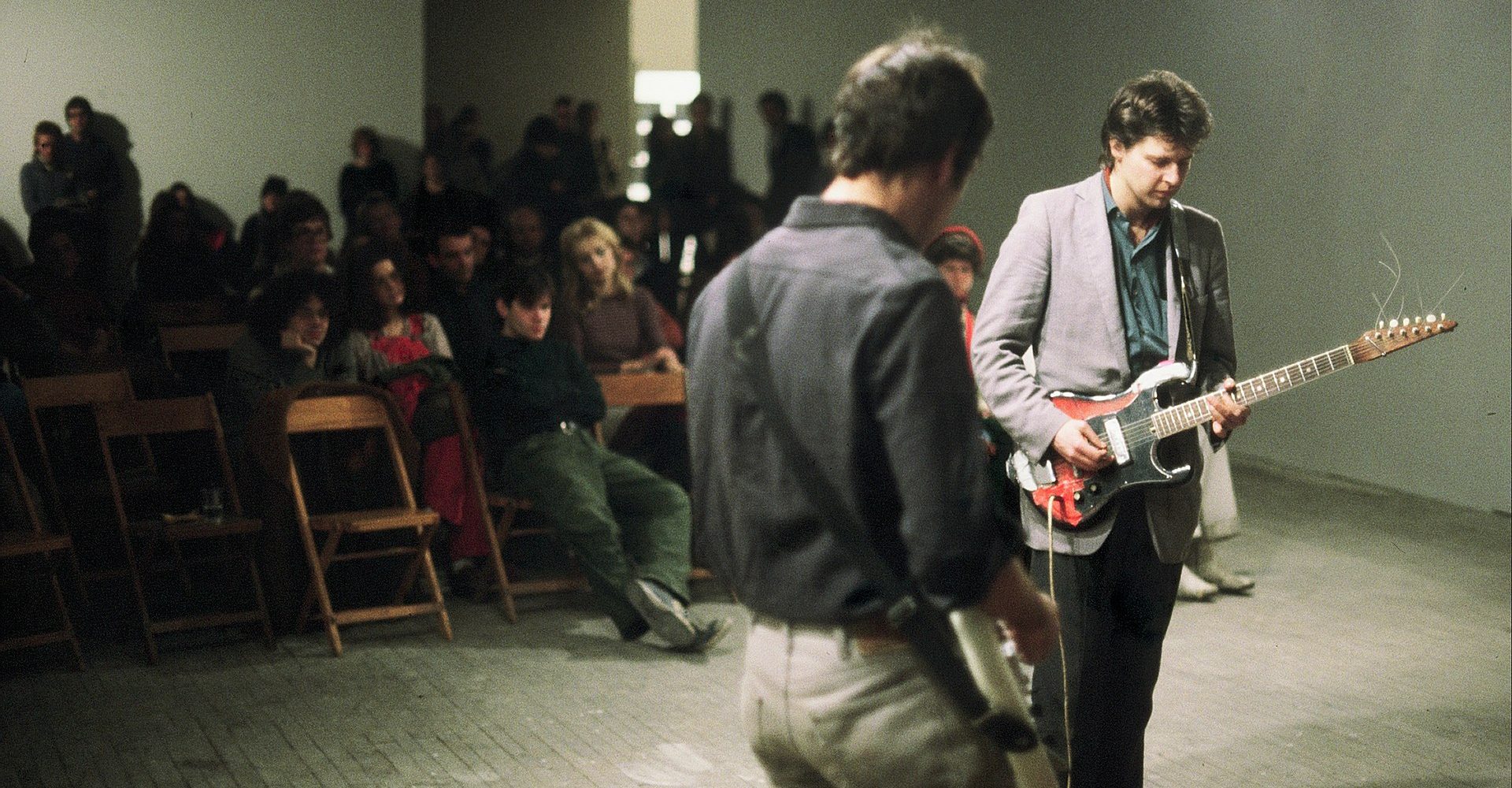Glenn Branca: four guitar works by the late composer

His music has influenced musicians and divided critics the world over – but his impact on our understanding of what guitars can do can’t be denied.
By Dr Ken Murray, Head of Guitar at the Melbourne Conservatorium
As many of you will know by now, the American avant-garde composer and guitarist Glenn Brancadied earlier this week, on 13 May, aged 69. Branca had a close relationship with the guitar from an early age and made a name for himself as an improviser and composer active in the short-lived New York No Wave scene in the late 1970s.
He was a pioneer of composition for multiple electric guitars and his work intersected with various trends in contemporary art and rock music.
The Melbourne Conservatorium’s New Music Studio presented Branca’s electric guitar piece, Symphonies 8 and 10 (The Mysteries), last year at Melba Hall – the first time those works had been played in Australia. Branca was a proudly independent artist and hired out the music for his works personally. He maintained an active interest in the performances of his works around the world and noted our performances on his website.
So let’s have a look at five tracks that tell us more about the man and his work.
Branca’s early studies were in theatre. The video below, from 1978, shows Branca wrestling noises from his Fender Telecaster in a highly physical and theatrical performance. Improvisation was at the heart of his creative process.
One of Branca’s earliest release was the album Lesson No.1 (1980). On the title track, below, the energy and aggression of punk rock meets minimalist aesthetics. Here Branca is experimenting with the multiple guitar textures he would later develop in his electric guitar symphonies:
Branca mentored a number of prominent rock musicians, most notably Thurston Moore and Lee Ranaldo from the band Sonic Youth. In 1981, Branca released their first, eponymous EP on his independent label Neutral Records, before releasing their debut album, Confusion is Sex, in 1983.
The influence of Branca’s use of drones, alternate tuning and microtonality can be heard in many of the band’s tracks, such as Kill Yr Idols from 1983:
Branca valued the electric guitar for its accessibility, sonic potential and sheer volume.
His symphonies for massed electric guitars and drums/percussion are prime examples of what American musicologist Robert Palmer called the “big ring”. Palmer wrote:
“[O]nce a certain volume threshold has been passed, the electric guitar becomes another instrument entirely. Its tuning can now be used to set up sympathetic resonances between the strings so that techniques such as open tuning and bar chords set the entire instrument humming sonorously, sustained by amplification until it becomes a representation in sound of the wonder of Creation itself – the Big Ring.”
The alternate tunings required for Branca’s symphonies initially caused some concern for musicians. It was debated whether or not the parts could be performed in standard tuning but it became clear that the tuning was integral to the success of the piece. All six strings on the soprano, alto and tenor electric guitars were tuned to various octaves of the same note.
This is a highly unusual tuning, with a notable precedent being Percy Grainger’s tuning of all strings to a unison B in the guitar parts for his work Shallow Brown (1925). It allows vigorous strumming across all strings to give an incredibly resonant representation of a single pitch and its octaves.
Even though Branca’s symphonies do not adhere to traditional notions of symphonic form, the scale and scope of his later works is undeniably epic. Symphony no. 13 (Hallucination City, 2008)was written for 100 electric guitars:
Branca’s music has divided critics, especially in the world of contemporary classical music. What can’t be denied, though, is this: he explored and celebrated the sonic possibilities of the electric guitar and genuinely crossed over between the worlds of popular and art music.